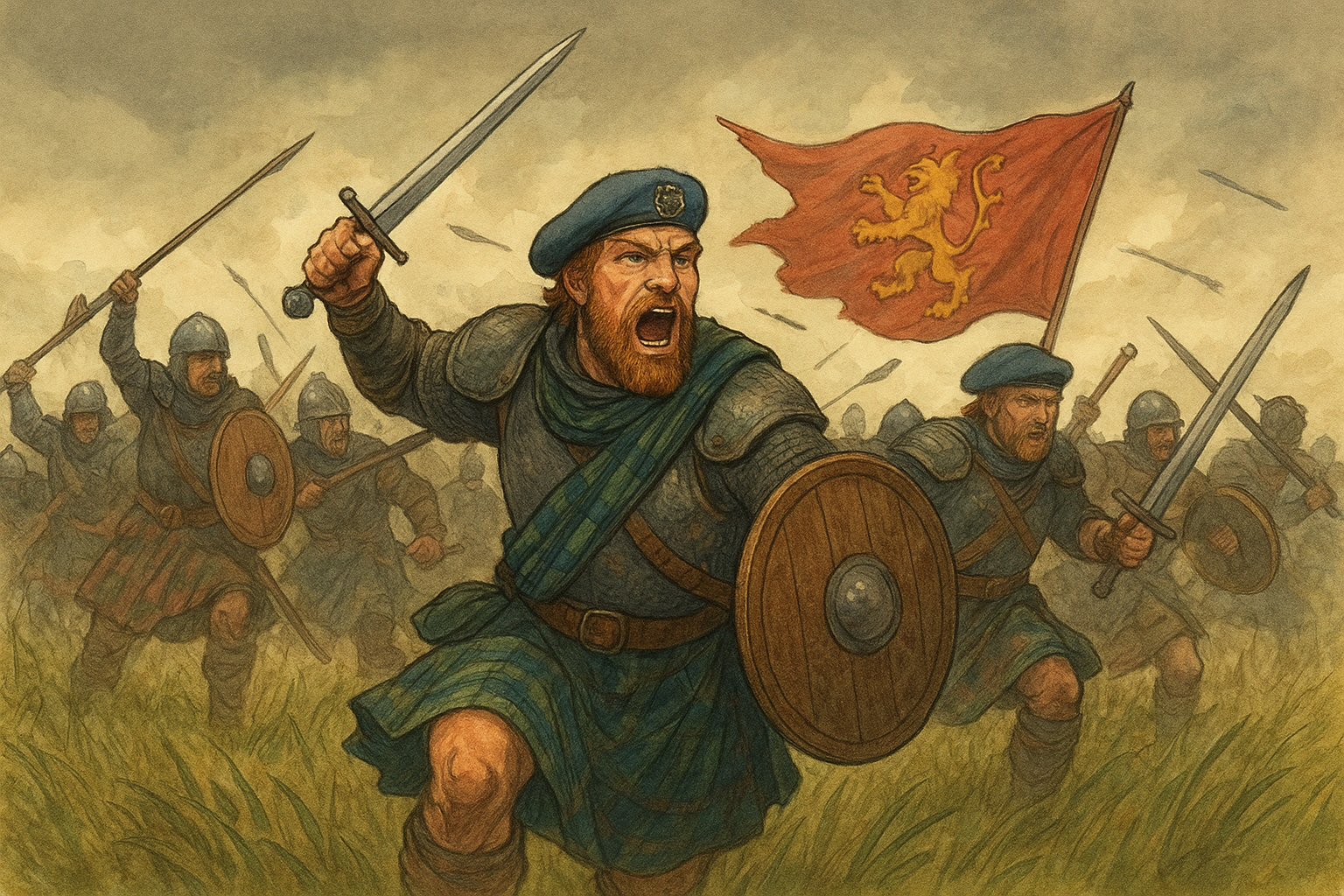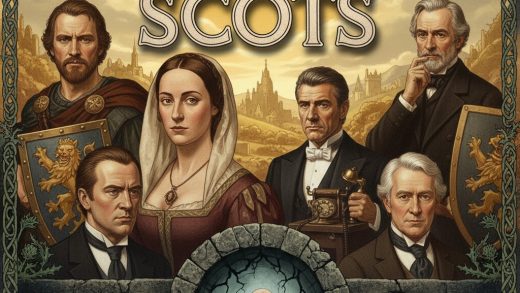
The Battle of Bannockburn in June 1314 is the most celebrated Scottish victory, though it took another 14 years to achieve formal independence. The battle was spurred by King Edward II’s massive invasion of Scotland—the largest ever—following King Robert the Bruce’s demand that all remaining Balliol supporters acknowledge his kingship, and the imminent surrender of the English garrison at Stirling Castle. Despite the English summoning 27,000 men (likely fewer appeared), the Scots common army of around 6,000 experienced troops, veterans of eight years of successful guerrilla warfare, blocked the road to Stirling. Bruce had carefully chosen the ground, using natural obstacles like the Bannock Burn and soft boggy ground, and prepared the field with hidden “pots” to disrupt cavalry.
The first day of fighting opened with the famous individual duel where Bruce, riding “ane palfray, litil and joly,” deftly killed the charging English knight Sir Henry de Bohun with his battle-axe, electrifying Scottish morale. Later that day, two English commanders, attempting to outflank the Scots, were caught by surprise by Thomas Randolph’s schiltrom (spear formation). A ferocious melee ensued where the dense Scots spearmen forced the English cavalry into flight, demonstrating the effectiveness of Bruce’s new, offensive use of the schiltroms. Despite the setbacks, the English army, still hoping to lure Bruce into a decisive set-piece battle where their longbowmen could be used, encamped in the restricted area of the Carse of Balquhiderock.
At this critical juncture, a Scots noble serving the English, Sir Alexander Seton, defected to Bruce, providing vital intelligence about the low English morale and confined position. Bruce decided to risk everything and face Edward in open battle the next morning. At dawn, the Scots advanced out of the wood, kneeling in prayer, which Edward II misinterpreted as a plea for mercy. The battle began with an archery duel, but the Scots rapidly advanced to avoid its inevitable conclusion. Edward Bruce’s schiltrom clashed with the English vanguard, while Randolph’s formation closed in on the left. The English cavalry found themselves hemmed in, unable to maneuver or bring their archers to bear effectively.
In the center, a ferocious hand-to-hand fight hung in the balance until Bruce committed his own schiltrom, including the Gaelic warriors, forcing the English to begin giving ground. As the cry “On them! On them! They fail!” arose, a reluctant Edward II was escorted away. His departure triggered a panic and rout among the English forces, who were driven back into the burn, where hundreds of men and horses drowned. English casualties were heavy, including thousands of infantry and over 100 knights killed or captured. Though Edward’s escape meant the war continued, the resounding Scottish victory left Bruce in total military control, cemented his kingship, and secured the release of his wife, daughter, and Bishop Wishart in exchange for English captives.
Discover more from WILLIAMS WRITINGS
Subscribe to get the latest posts sent to your email.




